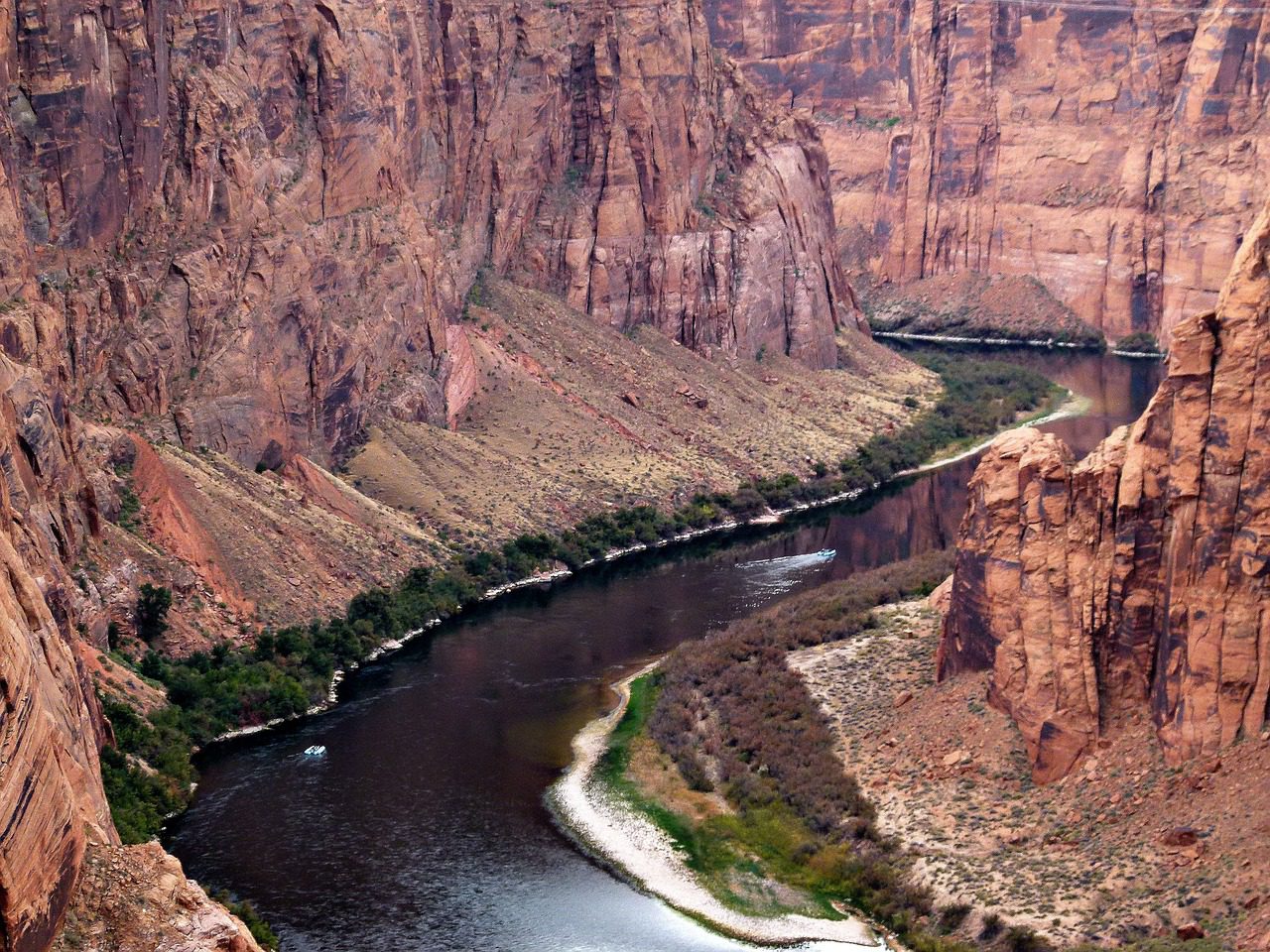June 15, 2023 — The Department of the Interior  kick-started the formal process to establish the forthcoming operating guidelines and strategies for the Colorado River’s sustainability and stability yesterday. The new rules will supersede the 2007 Colorado River Interim Guidelines for Lower Basin Shortages and the Coordinated Operations for Lake Powell and Lake Mead, due to end in 2026.
kick-started the formal process to establish the forthcoming operating guidelines and strategies for the Colorado River’s sustainability and stability yesterday. The new rules will supersede the 2007 Colorado River Interim Guidelines for Lower Basin Shortages and the Coordinated Operations for Lake Powell and Lake Mead, due to end in 2026.
Inclusive and Science-based Guidelines.
This rigorous and transparent public initiative aims to collect feedback for the ensuing operational guidelines. It will focus on devising strategies that encompass the present and anticipated hydrology of the Colorado River Basin. The Basin is currently suffering an unprecedented drought, spurred by climate change, which is amplifying the probability of high temperatures and persistent low-runoff conditions, thereby limiting water availability across the area.
Deputy Secretary Tommy Beaudreau stated , “The Biden-Harris administration remains dedicated to partnering with states, Tribes, and Western communities to find consensus solutions in response to climate change and continuous drought. These partnerships are critical for our ongoing efforts to secure the sustainability and stability of the Colorado River Basin into the future. We’re looking ahead to develop the next set of guidelines for Lake Powell and Lake Mead, collaboratively, based on the best available science.”
, “The Biden-Harris administration remains dedicated to partnering with states, Tribes, and Western communities to find consensus solutions in response to climate change and continuous drought. These partnerships are critical for our ongoing efforts to secure the sustainability and stability of the Colorado River Basin into the future. We’re looking ahead to develop the next set of guidelines for Lake Powell and Lake Mead, collaboratively, based on the best available science.”
Preparing for the Future.
“Launching new operating guidelines for Lake Powell and Lake Mead is a significantly critical task and must start immediately to allow a comprehensive, inclusive, and science-based decision-making process to be finished before the current agreements end in 2026,” said Reclamation Commissioner Camille Calimlim Touton . “The Bureau of Reclamation is dedicated to ensuring we have the necessary tools and strategies to guide the next chapter of the Colorado River Basin, particularly amidst continued drought conditions.”
. “The Bureau of Reclamation is dedicated to ensuring we have the necessary tools and strategies to guide the next chapter of the Colorado River Basin, particularly amidst continued drought conditions.”
Separate Measures for Colorado River Basin Protection.
The process begun yesterday operates independently from the recently declared measures to shield the Colorado River Basin until the end of 2026. The Supplemental Environmental Impact Statement, aimed at revising the December 2007 Record of Decision, will establish interim rules through 2026’s end; yesterday’s initiated process will formulate guidelines post-current interim guidelines’ expiry.
The Notice of Intent (NOI) to prepare an Environmental Impact Statement requests the public to consider the previous 15 years of operational experience post-2007 Interim Guidelines adoption. It also invites opinions on how the best-available science should shape future guidelines and strategies robust and adaptable enough to cope with a wide variety of hydrological conditions. The NOI also prompts the public to consider the purpose and elements of the 2007 Interim Guidelines, whether they should be maintained, modified, or removed to provide increased stability to water users and the public across the Colorado River Basin. The public can comment on the NOI until August 15, 2023.
International Cooperation and Investment in Climate Resilience.
While the post-2026 process will determine only domestic operations, the Biden-Harris administration is committed to continued cooperation with the Republic of Mexico. Consultations between the US and Mexico are expected to be facilitated by the International Boundary and Water Commission, aiming to prolong the Binational Cooperative Process under the 1944 Water Treaty.
The “Investing in America” agenda by President Biden marks the most significant investment in climate resilience in the country’s history. It offers essential resources to fortify the West’s resilience to drought and climate change, including protecting the short- and long-term sustainability of the Colorado River System.
Interior Department’s Investments for Colorado River Basin.
As of yesterday, the Interior Department has announced the following investments for Colorado River Basin states , projected to result in water savings of hundreds of thousands of acre-feet annually once these projects are complete:
, projected to result in water savings of hundreds of thousands of acre-feet annually once these projects are complete:
- $281 million for 21 water recycling projects anticipated to augment annual water capacity by 127,000 acre-feet.
- Up to $233 million in water conservation funding for the Gila River Indian Community, including $83 million for a water pipeline project, and an additional $50 million from the Inflation Reduction Act through the Lower Colorado River Basin System Conservation and Efficiency Program. Similar investments are slated for 2024 and 2025.
- Over $73 million for infrastructure repairs on water delivery systems, with $19.3 million allocated for the fiscal year 2022 and another $54 million announced last month.
- $71 million for 32 drought resiliency projects designed to enhance access to water through groundwater storage, rainwater harvesting, aquifer recharge, and water treatment.
- $20 million for new small surface and groundwater storage investments.
- Eight new System Conservation Implementation Agreements in Arizona that will commit water entities in Tucson and Phoenix metro areas to conserve up to 140,000-acre feet of water in Lake Mead in 2023, and up to 393,000-acre feet through 2025.


Leave a Reply